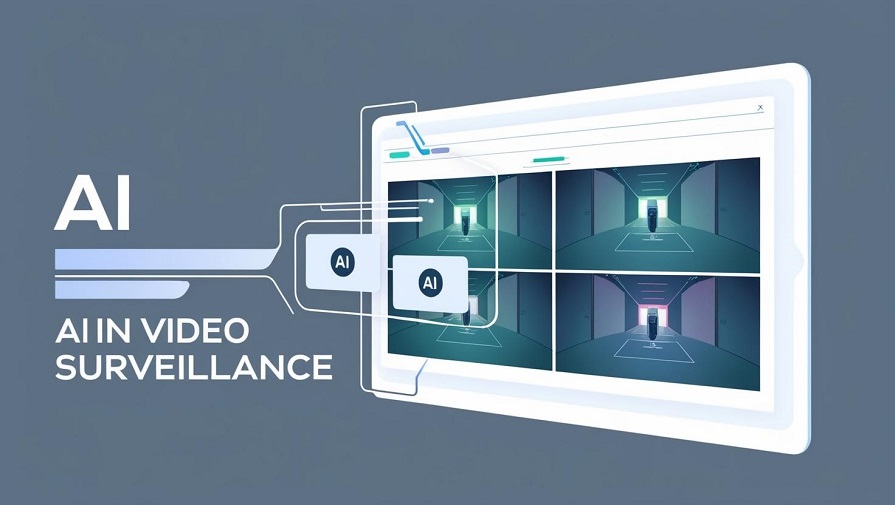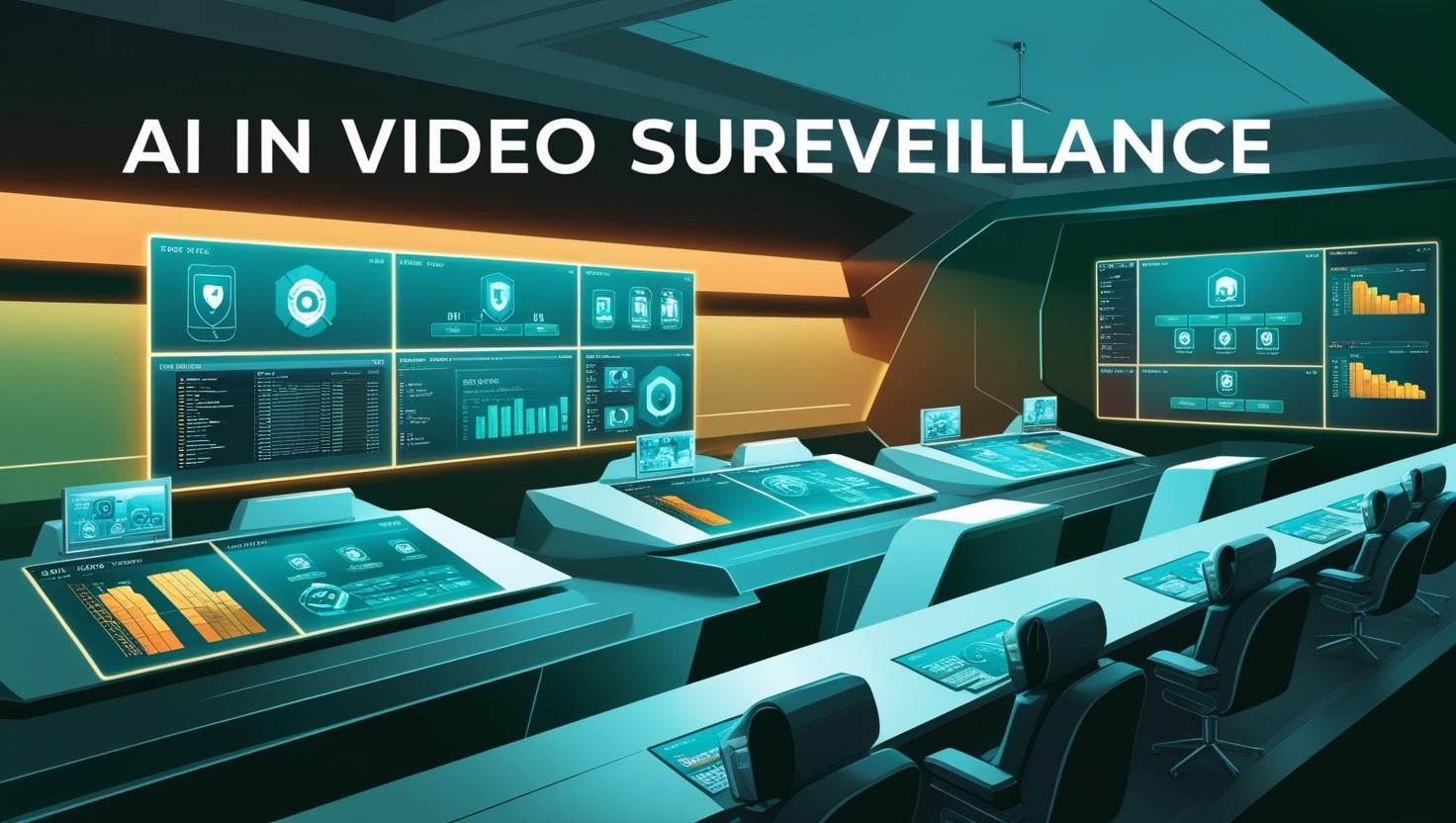The advent of Artificial Intelligence (AI) has brought transformative changes to various industries, and one area that has seen significant growth is the AI surveillance camera market. As technology continues to evolve, AI-powered surveillance systems have become a central part of security strategies across sectors such as retail, transportation, government, and smart cities. With capabilities like facial recognition, behavior analysis, and real-time threat detection, AI surveillance cameras are not only enhancing security but also driving efficiency, reducing human error, and enabling proactive responses to potential risks.
In this article, we will explore the growth of the AI surveillance camera market, factors influencing its expansion, and the potential future of AI-powered surveillance systems.
Market Size and Growth Projections
The AI surveillance camera market has been experiencing impressive growth over the past few years. The AI in video surveillance industry is projected to grow from USD 3.90 billion in 2024 to USD 12.46 billion by 2030, growing at a CAGR of 21.3% from 2025 to 2030. This rapid growth is attributed to several key factors that are driving demand for AI-based surveillance systems.
Key Factors Driving Market Growth
- Advancements in AI and Machine Learning AI algorithms, particularly those focused on computer vision and deep learning, have enabled surveillance cameras to perform far beyond basic image capturing. AI systems can now analyze video feeds in real time, detect objects or people of interest, identify anomalies, and trigger automated responses. As AI continues to advance, the accuracy and reliability of AI surveillance cameras are expected to improve, further propelling market growth.
- Increased Demand for Public Safety and Security One of the primary drivers of the AI surveillance camera market is the growing demand for enhanced public safety and security. Governments and organizations worldwide are investing heavily in AI-based surveillance technologies to secure public spaces, buildings, transportation networks, and critical infrastructure. AI cameras can efficiently monitor vast areas and provide real-time alerts for suspicious activity, significantly improving response times in emergency situations.
- Rise of Smart Cities The global push toward building smart cities is also a key factor contributing to the demand for AI surveillance cameras. Smart cities rely on AI and IoT technologies to manage urban infrastructure, traffic, and public services more efficiently. AI-powered surveillance cameras are critical in these environments as they help monitor traffic flow, detect accidents, and ensure public safety in real-time.
- Reduction in Operational Costs Traditional surveillance systems often require constant human monitoring and manual analysis of footage, which can be time-consuming and prone to error. AI cameras automate these tasks, reducing the need for human intervention and enabling more efficient surveillance. As a result, businesses and governments are adopting AI surveillance systems to save on operational costs, improve response times, and reduce the risk of human error.
- Integration with Other Security Systems AI surveillance cameras are increasingly being integrated with other security technologies, such as access control systems, alarm systems, and intrusion detection systems. This integration helps create a more comprehensive and automated security infrastructure. AI cameras that can interface with these systems further enhance the capabilities of an organization’s security operations, driving the growth of the AI surveillance camera market.
Download PDF Brochure @
https://www.marketsandmarkets.com/pdfdownloadNew.asp?id=84216922

Regional Insights: Which Markets Are Leading?
- North America North America is a key player in the AI surveillance camera market, with the United States leading the region in terms of both market share and technological advancements. The increasing adoption of AI-powered surveillance systems by government agencies, law enforcement, and private sectors is contributing to rapid growth. Additionally, the presence of several prominent AI technology providers, including companies like Google, Amazon, and Microsoft, has fostered innovation and expanded the reach of AI surveillance technologies.
- Asia-Pacific The Asia-Pacific (APAC) region is expected to witness the highest growth rate in the AI surveillance camera market. Rapid urbanization, the rise of smart cities, and increased government investments in public safety have been driving factors in countries like China, India, and Japan. Furthermore, many technology firms in APAC are focusing on the development of AI-based surveillance solutions, offering both cost-effective and advanced systems to meet the growing demand.
- Europe Europe is also a significant market for AI surveillance cameras, with a focus on smart cities, public security, and anti-terrorism efforts. The European Union has been proactive in incorporating AI technologies for national and regional security, particularly with its commitment to building smarter infrastructure and safer public spaces.
Key Players in the AI Surveillance Camera Market
Several companies are at the forefront of innovation in the AI surveillance camera space. These companies are leveraging cutting-edge technologies such as deep learning, facial recognition, and predictive analytics to create sophisticated, intelligent surveillance solutions. Some of the prominent players include:
- Hikvision
- Dahua Technology
- Bosch Security Systems
- Axis Communications
- Hanwa Techwin
- Avigilon (a subsidiary of Motorola Solutions)
- Amazon (Ring)
- Amazon Web Services (AWS)
These companies are leading the market by offering AI-powered camera solutions that integrate seamlessly with existing security infrastructure and provide real-time analysis for businesses and government entities alike.

Challenges Facing the AI Surveillance Camera Market
While the AI surveillance camera market shows great potential, there are several challenges that need to be addressed for further growth:
- Privacy Concerns: The widespread use of AI surveillance systems has raised concerns about privacy violations. Issues related to the ethical use of facial recognition technology, data protection, and unauthorized surveillance need to be carefully managed to ensure consumer and public trust.
- High Initial Costs: The upfront cost of installing AI surveillance systems can be significant, which may limit their adoption, especially for small businesses. However, the growing affordability of AI technology and the long-term benefits of operational cost savings are expected to make these systems more accessible over time.
- Integration with Existing Infrastructure: Many organizations already have legacy surveillance systems in place, and upgrading to AI-powered systems can be complex. Ensuring compatibility with older equipment and systems is a hurdle that needs to be overcome for broader adoption.
The Future of AI Surveillance Cameras
The future of the AI surveillance camera industry looks bright, with continued innovations expected in AI algorithms, cloud computing, and edge processing. In the coming years, AI-powered surveillance cameras will become more intelligent, more accurate, and even more integrated into broader security ecosystems. With the global demand for enhanced security and the rise of smart cities, AI surveillance systems will play an even larger role in shaping the future of public and private security.
As businesses and governments continue to invest in AI-based security solutions, the AI surveillance camera market is poised to expand significantly, creating opportunities for businesses, security professionals, and consumers alike.
The AI surveillance camera market is rapidly growing, fueled by advancements in AI and machine learning, the increasing demand for security, and the rise of smart cities. With significant investments from both private and public sectors, the market is expected to continue expanding, offering innovative solutions that improve public safety, operational efficiency, and cost-effectiveness. Although challenges such as privacy concerns and high initial costs remain, the overall outlook for the AI surveillance camera industry is highly promising.
